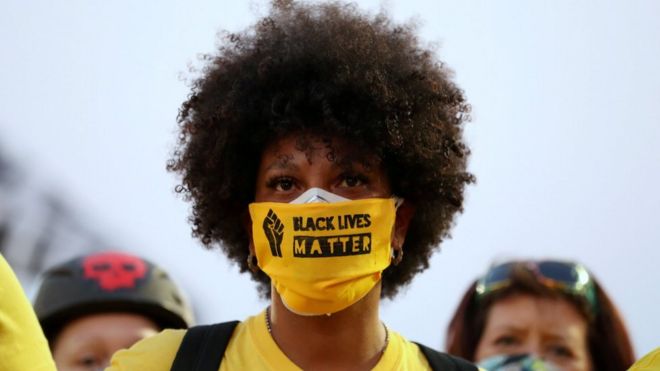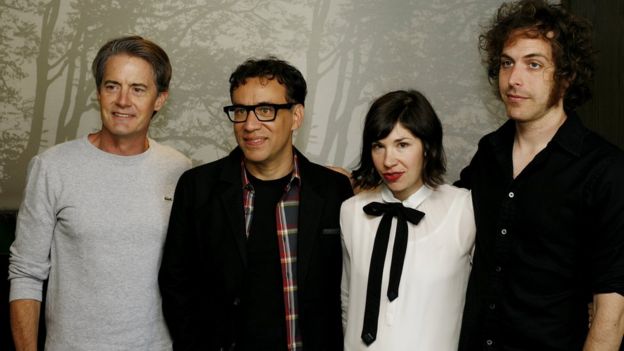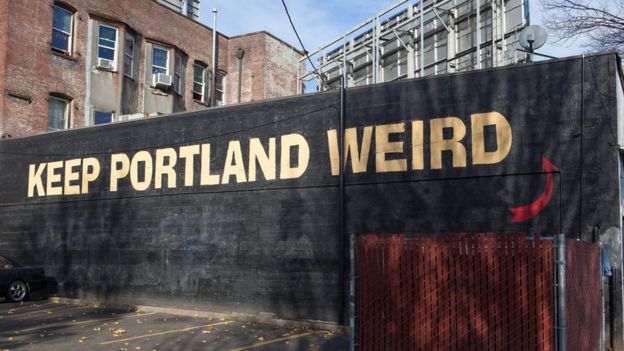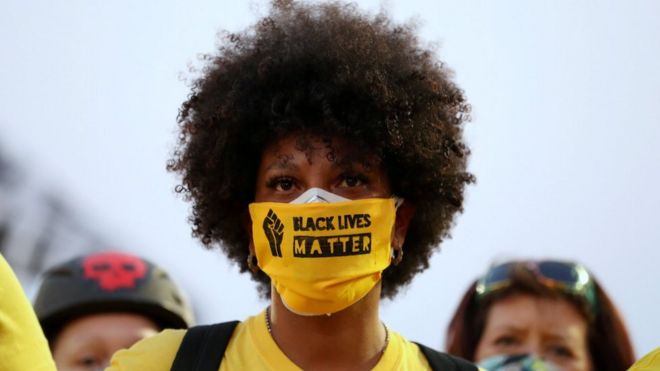“Portland is a city where young people go to retire.”
Fred Armisen declared this – in song form – in the opening scene of the sketch comedy show Portlandia in January 2011.
The show satirized the city on the US West Coast for its “hipster” culture – a city that gave unicyclists the right of way, where people brewed kombucha before it became mainstream, and whose slogan was literally “Keep Portland Weird”.
Four years later, with the city in the throes of rapid gentrification, beloved Portland magazine Willamette Week declared to its readers that this moment in 2011 was officially the day “Old Portland”, the one that was fun, bohemian and “weird”, died.
If the “Old Portland” was seen as a liberal utopia, then the “New Portland”, in 2020, is characterized by civil rights protests, violent clashes between far-right and anti-fascist groups, and images of federal agents indiscriminately bundling protesters into unmarked vehicles.

While Old Portlanders may have discussed their vegan cheese side-businesses, New Portlanders bond over how many times they’ve been tear-gassed.
But this change wasn’t as much of a leap as it may seem on the surface.
While the Portlandia stereotype endured for almost a decade, the reality for Portlanders themselves was very different. In the 2010s, wealthy outsiders relocated themselves and their businesses to the city in the hopes of capitalizing on its “cool”, while East Coast publications repeated the show’s joke about Portland
being “a retirement community for the young”. The city’s residents were frequently caricatured as the kind of people who use “cacao” as a safe word.
At the same time, Portlanders struggled to afford rents that were increasing at one of the fastest rates in the country; beloved local shops were being pushed out in favour of chains and high-rise apartment blocks; and the small businesses parodied on Portlandia, such as the feminist bookshop In Other Words, hit out at the show and everything it represented. Locals explicitly blamed the show for hastening unwanted development in the city. By the time the series ended in 2018, few Portlanders looked back fondly on its influence.
Read Also: The Nigerian Drummer Who Set The Beat For Us Civil Rights
For people of colour in Portland in particular, there was something egregious about the city’s “Portlandia” reputation. The show – and subsequent portrayals of the city in national media – seemed to whitewash life in what was already an extremely white city.
“I’ve never looked to Portlandia or other cultural phenomena for self-affirmation,” said activist Cameron Whitten, who set up the Black Resilience Fund during this summer’s protests. “Much of what Portland is famous for was not made for me or people who look like me.”
One moment in particular is seared into the black community’s collective memory – the Vanport disaster.

During World War Two, black people were recruited from across the US to work at a shipyard on the Columbia River, about five miles north of Portland. They were housed in a new development called Vanport, which was built in 110 days. At its height, Prof Jackson said, about 40,000 people lived there. But it was always intended to be a temporary housing project.
“After the war ended, many white Portlanders had hoped that the black people who came to work at the shipyards would return to the states from which they had originally come. Although some did, at least one-third of the 18,500 residents who remained in Vanport were black,” she explained.
“On 30 May 1948, Memorial Day, the waters of the Columbia River flooded Vanport and after six years of existence, it disappeared. For the 6,000 Black people who
found themselves without housing, it was especially traumatic.”
At least 15 people died – although some at the time believed the housing authority had quietly destroyed hundreds more bodies to cover up its slow response to the disaster. Surviving residents, who had been assured that the housing was safe, now had to try and find new homes in Portland. The Red Cross tried to help, but struggled because of deep-seated racism in the city. Housing was also limited “due to racial covenants that restricted whites from selling their homes to blacks”, said Prof Jackson.
“Many ended up in north and north-east Portland,” she said. “It is ironic that gentrification has [now] added to the movement of blacks out of the very areas that they were confined to. Today, these areas are populated in large part by white people, as black people have moved to the surrounding cities of Gresham, Beaverton, and Hillsboro.”
Entrenched Inequality to the Present day
Racism has persisted in Portland. A housing audit in 2011 found that landlords in the city discriminated against black and Latino tenants 64% of the time, by charging them extra fees, higher rents or demanding larger deposits, while black school pupils are four to five times more likely than their white classmates to be suspended or expelled.
Read Also: Trump Fires Back At Obama Harris Convention Attacks In All Caps Tweetstorm
Another report on racism from Portland State University and the Coalition of Communities of Color, published in 2014, found that black people were still disadvantaged in employment, health and high school graduation rates, compared to both white Portlanders and black families in the rest of the US. Average incomes and rates of home ownership are also significantly lower for black Portlanders than for their white neighbours and black Americans generally.
Activist Gregory McKelvey has been heavily involved in this summer’s protests. The city, he says, has only been able to see itself as a “liberal utopia” by adopting a colour-blind approach to racism – which for him means ignoring it.
“Portland is allowed to have a reputation as a progressive or edgy city because it does not have to reckon with its racist past, policing or segregation due to the demographics of the city,” he said. “Portland is certainly a lovely city and is a beautiful place to live – but part of what it is built upon is colonialism, white supremacy and segregation. Many people say Portland is a place that pushes black people out of neighbourhoods and replaces them with ‘Black Lives Matter’ signs.”
A Moment of Reckoning
But could this year’s protests change how Portland reflects on its present – and its past? The protests – which have now gone on for nearly 100 consecutive days – were sparked by the killing of George Floyd in Minneapolis in May, and at least initially were explicitly held in support of Black Lives Matter. When protesters established an autonomous zone in the city in June, they named it after a black man who was killed by Portland police in 2018. They made global headlines in July, when federal agents were deployed to the city.

Mr Whitten said he didn’t know what impact the ongoing protests would have on racial inequality in the city. But he said he was feeling hopeful.
“Frederick Douglass once said, ‘power concedes nothing without a demand’. I hope
that these protests fuel powerful demands that lead to the transformation we’ve been longing for.”
Prof Jackson is less optimistic. She said it was “ironic” that the protests had, in her opinion, “taken attention away from Black Lives Matter, and have become something completely different – we have come to a point where the Black Lives Matter movement is being hijacked for anti-government causes”.
Gregory McKelvey, meanwhile, doesn’t believe these protests alone will trigger a reckoning. It was “frustrating”, he said, that the movement was being framed by politicians as an issue of Democrats v Republicans, diverting the focus away from the local issues.
“Portland Police is the target of most of the protests, not Donald Trump. Our (local) elected officials want to deflect the issue to Trump and many national audiences allow that to happen because they care more about what is happening at the federal level than in our small city.
“For Portlanders, this has always been about Portland and nothing will change that.”
